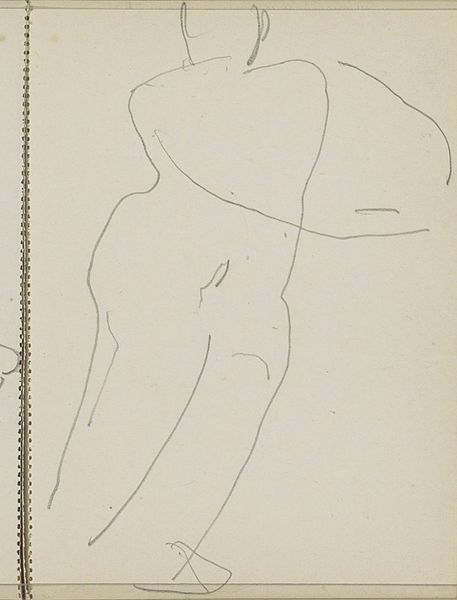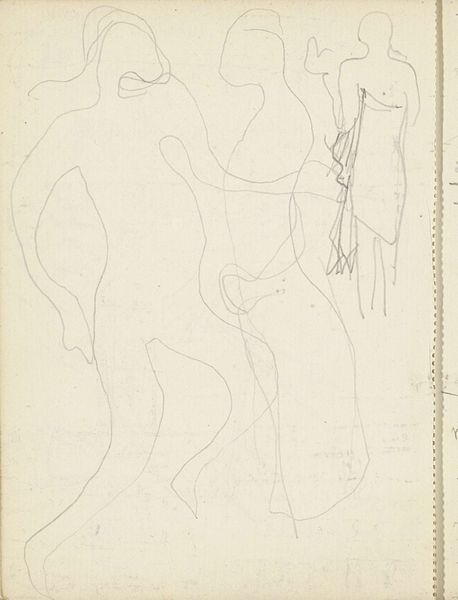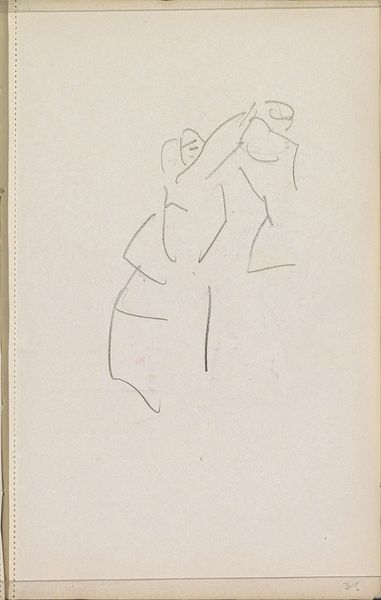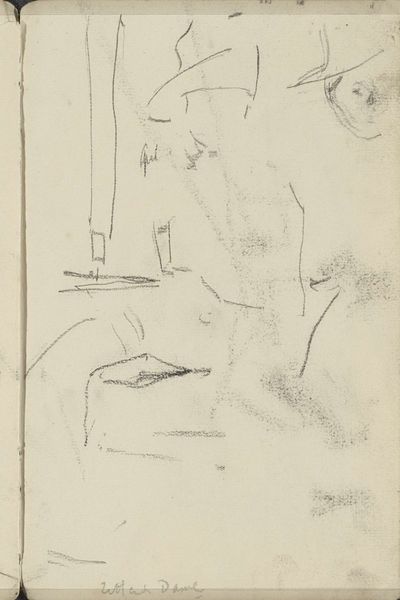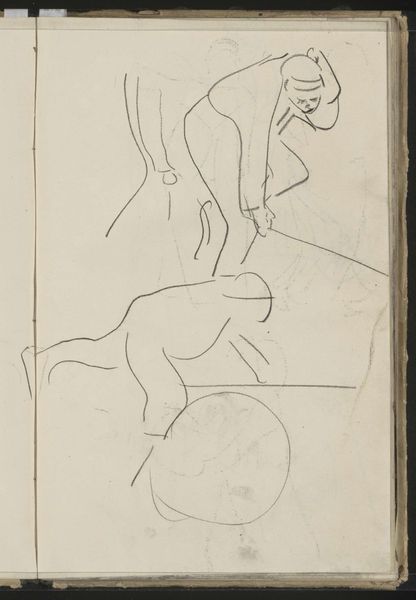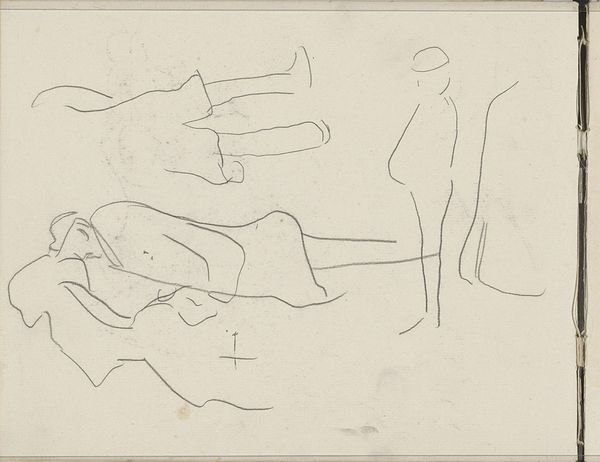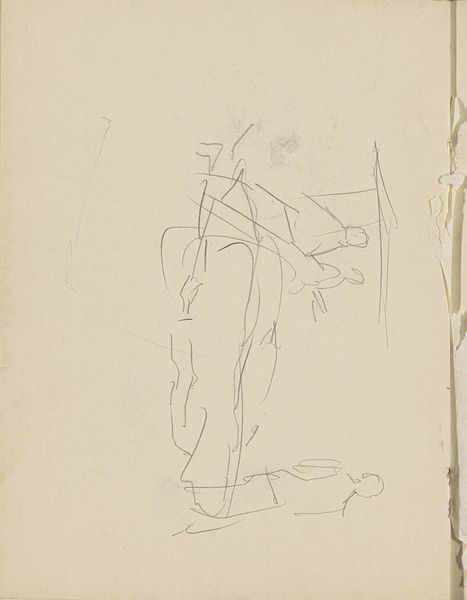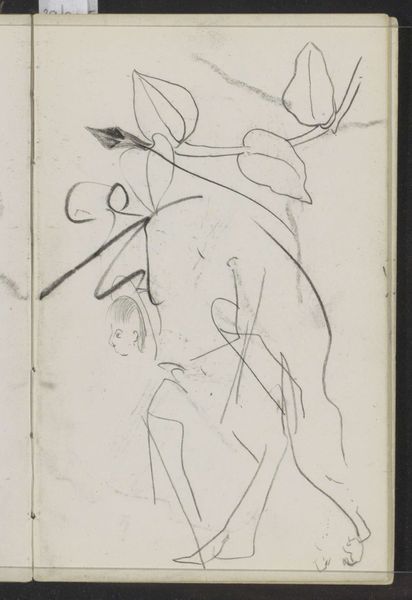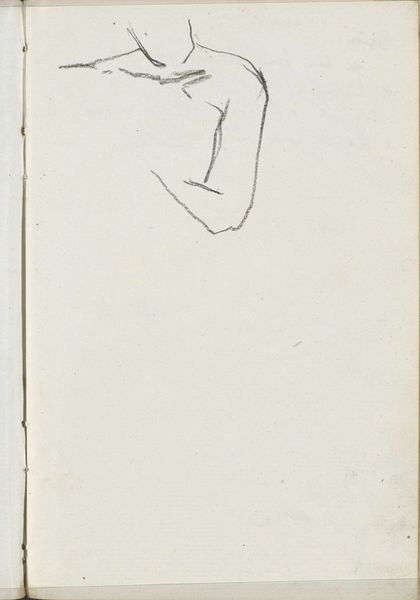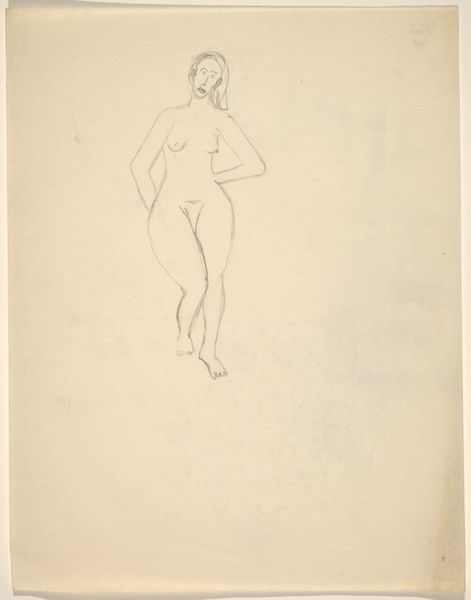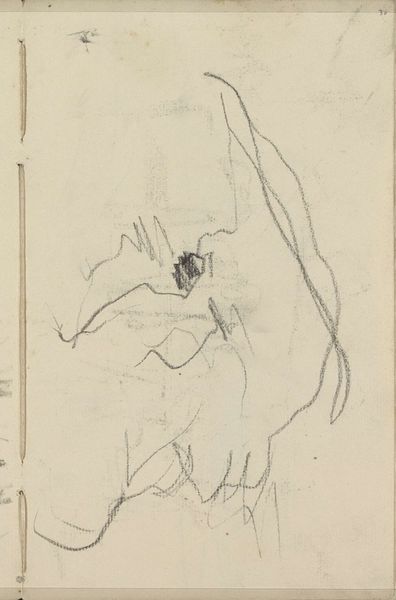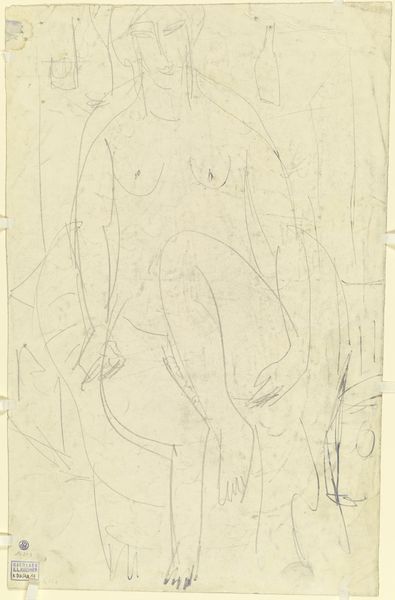
Copyright: Rijks Museum: Open Domain
Curator: Carel Adolph Lion Cachet sketched "Standing Nude Man" around 1895. What strikes you first about it? Editor: The bare materiality, actually. The exposed page, the faint pencil lines. It feels so… provisional. Raw. Curator: It's very direct, isn't it? A figure emerging, or perhaps receding, from the paper's void. Nudity, of course, has long carried allegorical weight – innocence, vulnerability. Here, the lines lack any bravado; it suggests Cachet sought truth rather than idealization. Editor: Yes, and the quickness implies function over finish. Look at the ghostly foot, then the heavy smudging underneath as if exploring how to ground the figure. It's about process—the material struggle. A commercial artist often reuses sketches in larger works. Did this drawing appear in his printed material, even? Curator: I don’t know in Cachet’s prints, but it is interesting to consider this within the cultural memory of the "academic nude." In many ways, this recalls classical forms. Is this his study of the ideal? A figure that perhaps represents man, freed from worldly ties? Editor: Interesting that you leap to that question so readily, rather than "man as earthly subject". The quick sketch, paper choice – these contextual clues tell a story, and remind us, too, how drawings like this are consumed. Or discarded! Curator: Ultimately, for me, it provokes the essential question: what is humanity freed from artifice? It invites contemplation on human existence. Editor: I’m less compelled to look inward via iconography, and more into what Cachet actually did—with what, why, and at what point. And perhaps more than anything the many ways images of the figure function commercially. I see a hand testing its craft, as a craft to sell to others!
Comments
No comments
Be the first to comment and join the conversation on the ultimate creative platform.
